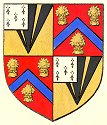 |
A SHORT HISTORY OF TETTENHALL9. The nineteenth century - enclosure |
|
 |
A SHORT HISTORY OF TETTENHALL9. The nineteenth century - enclosure |
|
|
Stebbing Shaw’s county history of 1801 says that Tettenhall then
contained 7,551 acres of enclosed land (of which 250 acres were
woodland) and 1000 acres of "wasteland". The population was about 2,000
and there were 332 houses. These 2,000 people would have been spread over the whole of this large parish; but at this time there were very few people in Tettenhall Wood - a large stretch of land running from where Tettenhall College now stands to where the Mount Hotel now stands. This was part of the waste, which was not necessarily barren and useless land but simply land which had not been included in the open fields, and on which villagers could pasture their animals and, usually, take firewood or almost anything else that was useful. But Tettenhall Wood was, in fact, a fairly bare common, not a tree in sight, but only a few gorse and broom bushes. (It is said that Wolverhampton's first horse races took place on it).
By 1806, and probably well before then, all of the open fields in
Tettenhall had been enclosed, turning all the old vast fields of strip
cultivation into individually owned, smaller, fenced off, fields of the
type we are familiar with today. There is no trace of any enclosure
legislation covering Tettenhall (or any nearby area) and doubtless all
this enclosure had been carried out by agreement between the Lords of
the Manors and anyone else with a legal interest in the land. There is
one exception: in the case of Tettenhall Wood it seems that such an
agreement was not forthcoming and legislation was resorted to. The
common was parcelled out, and new roads, such as Wood Road and Mount
Road, were made. The last vestiges of the medieval farming system had
been removed. |